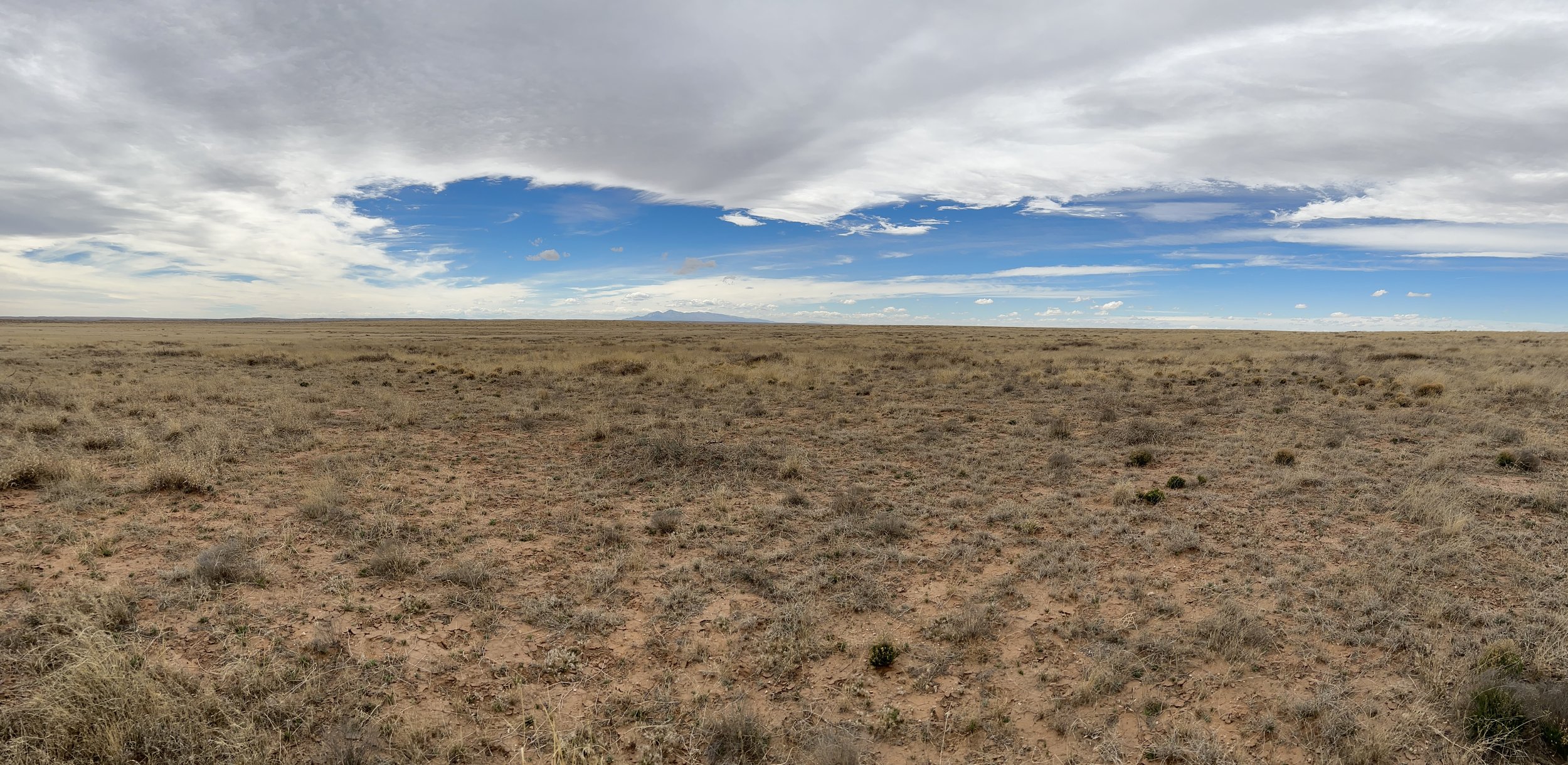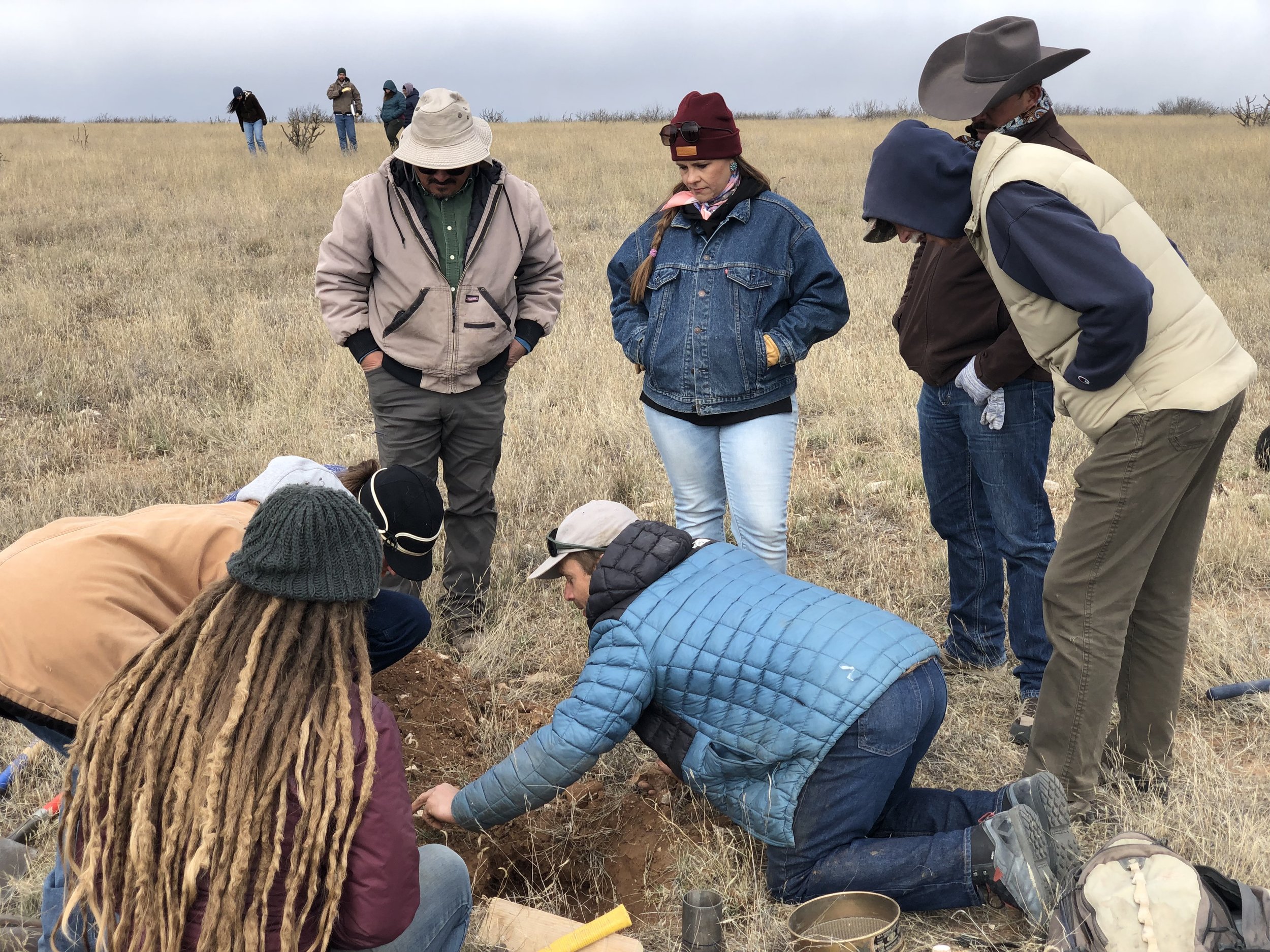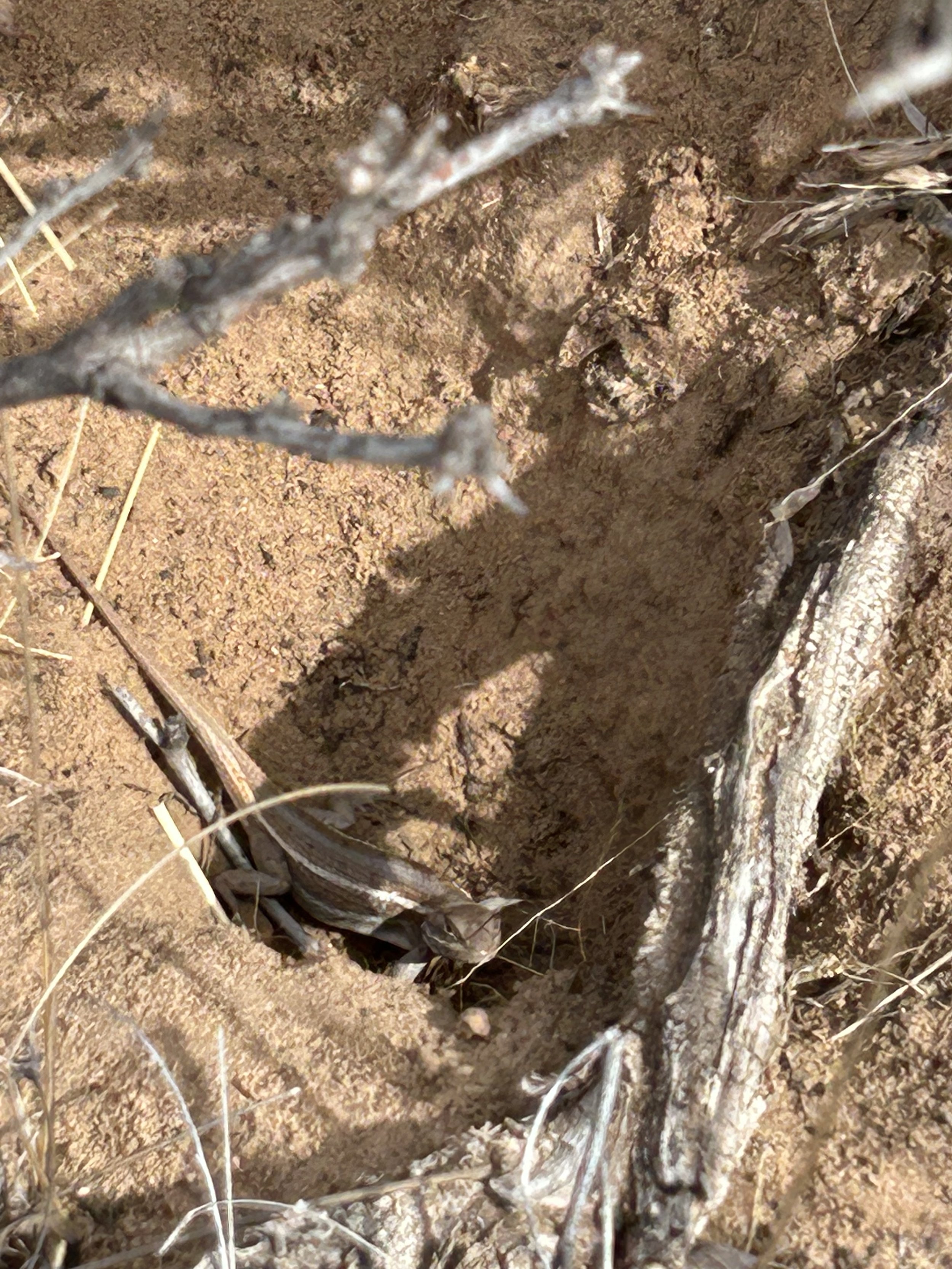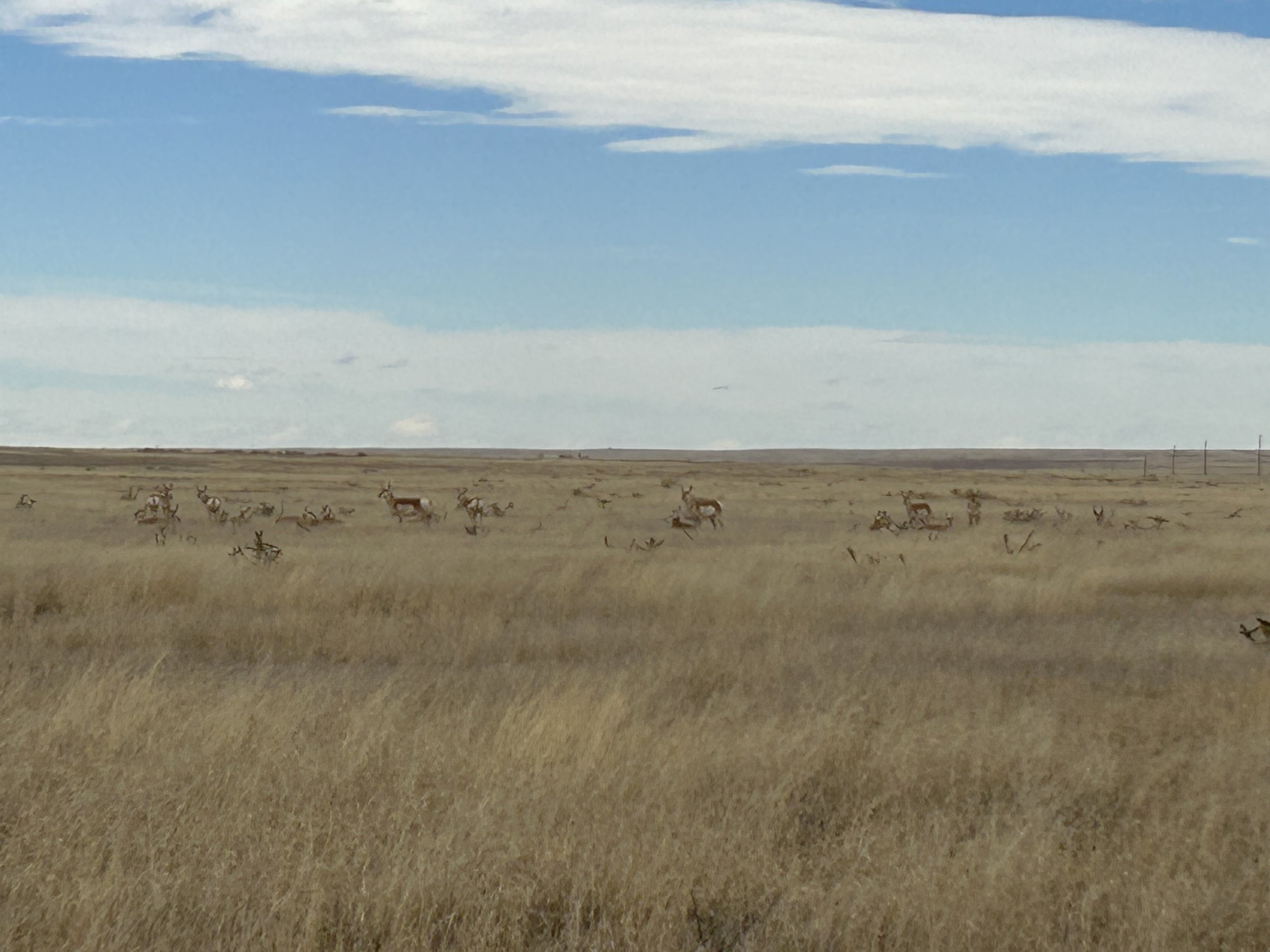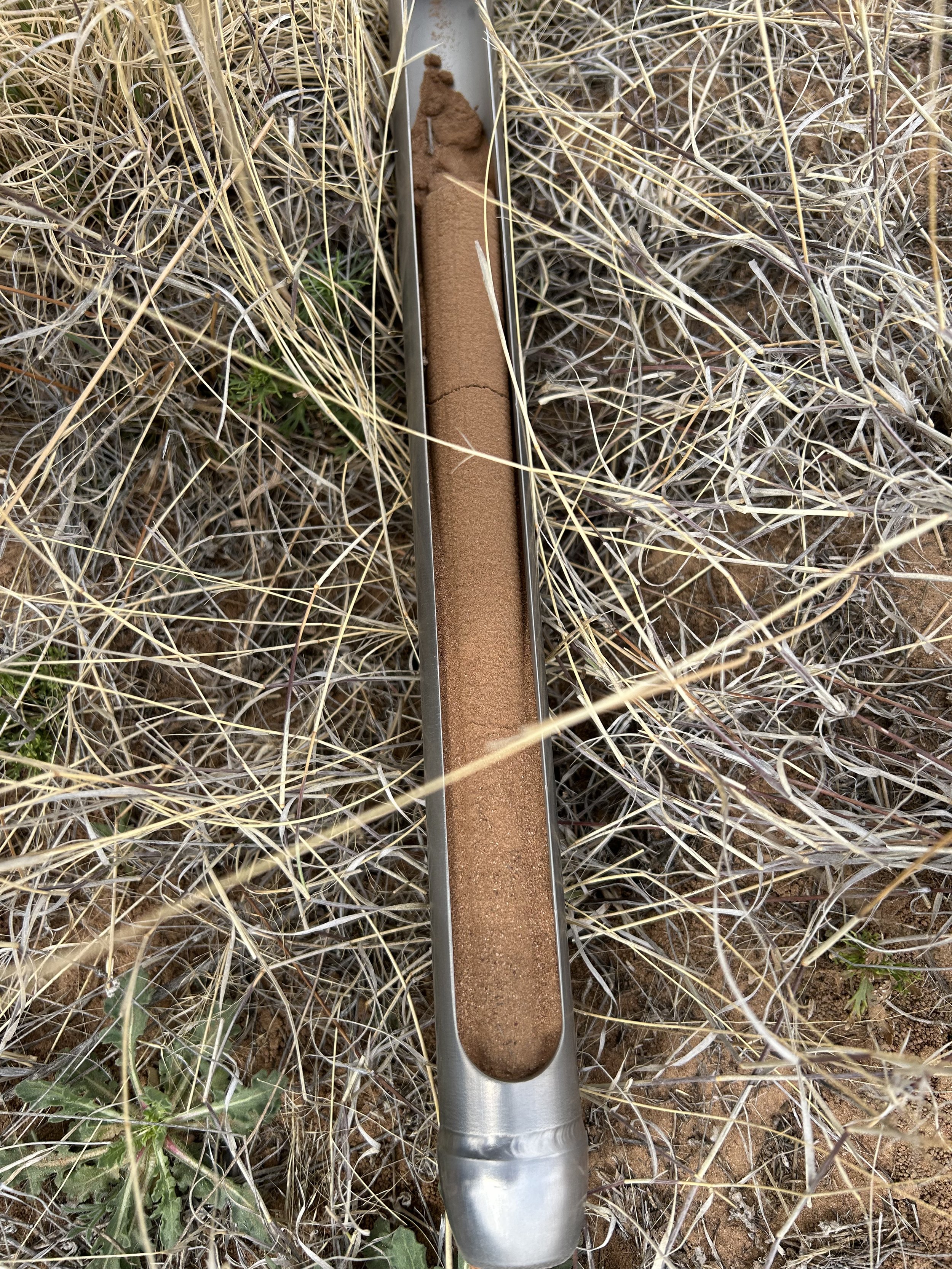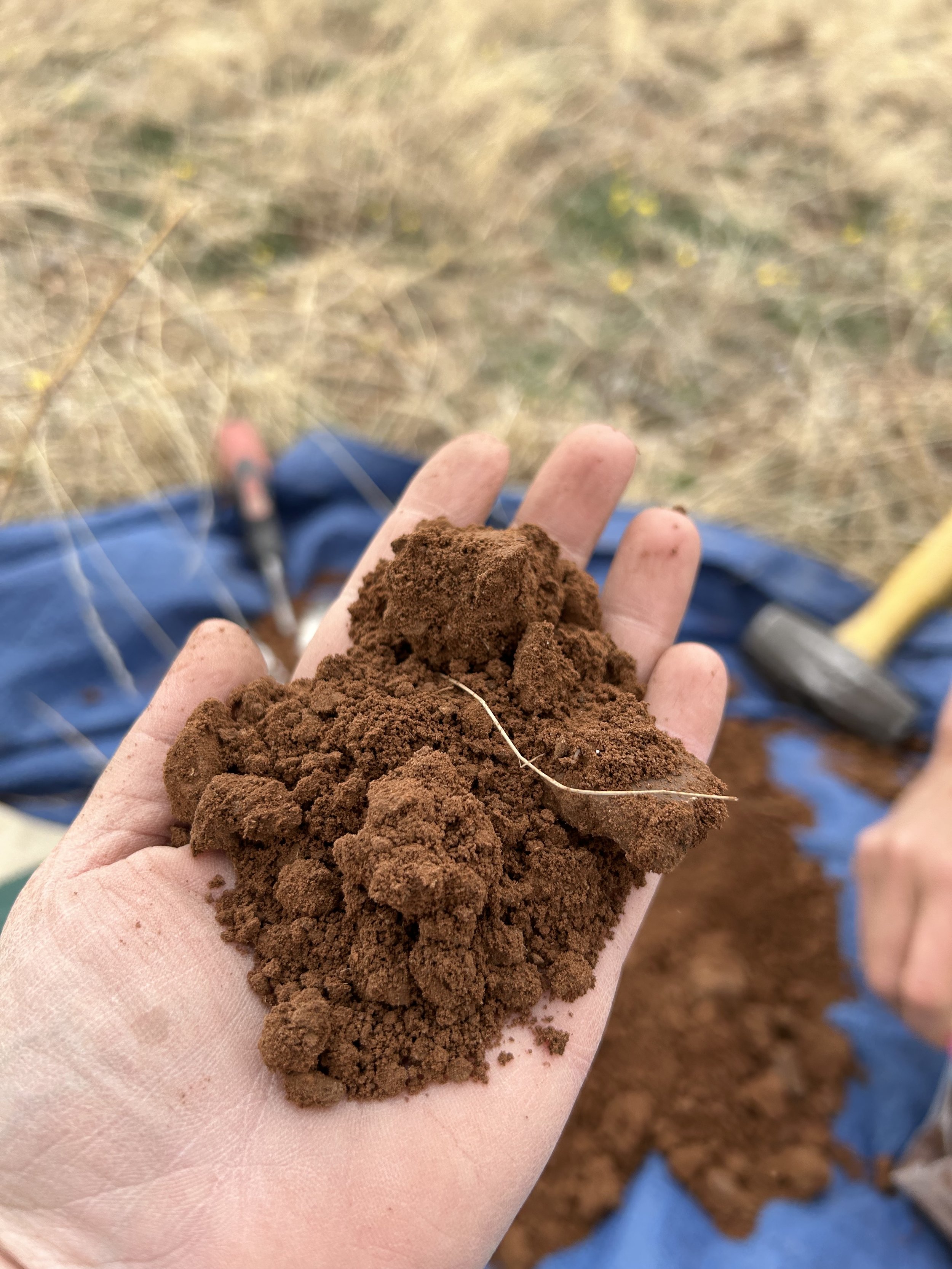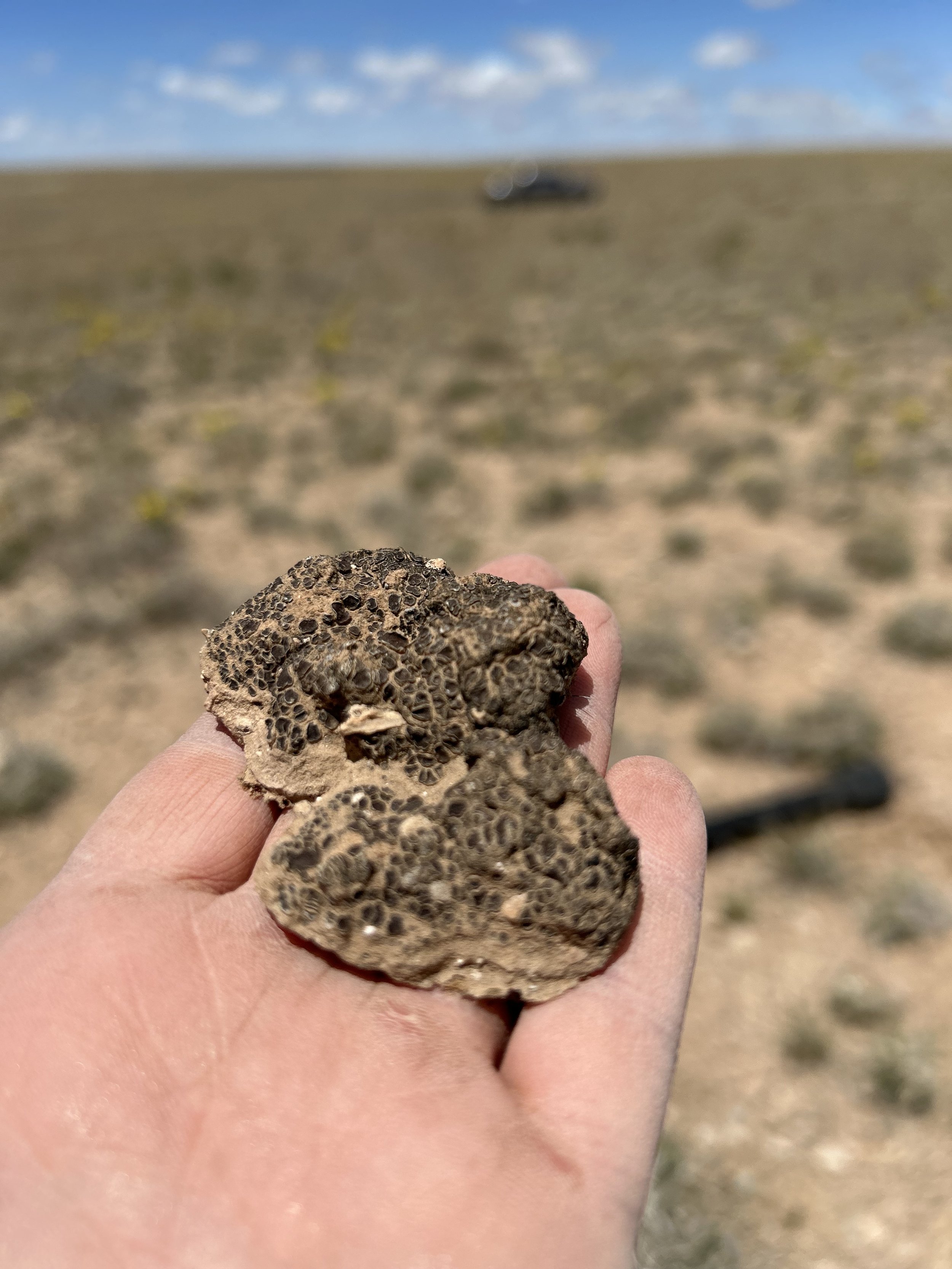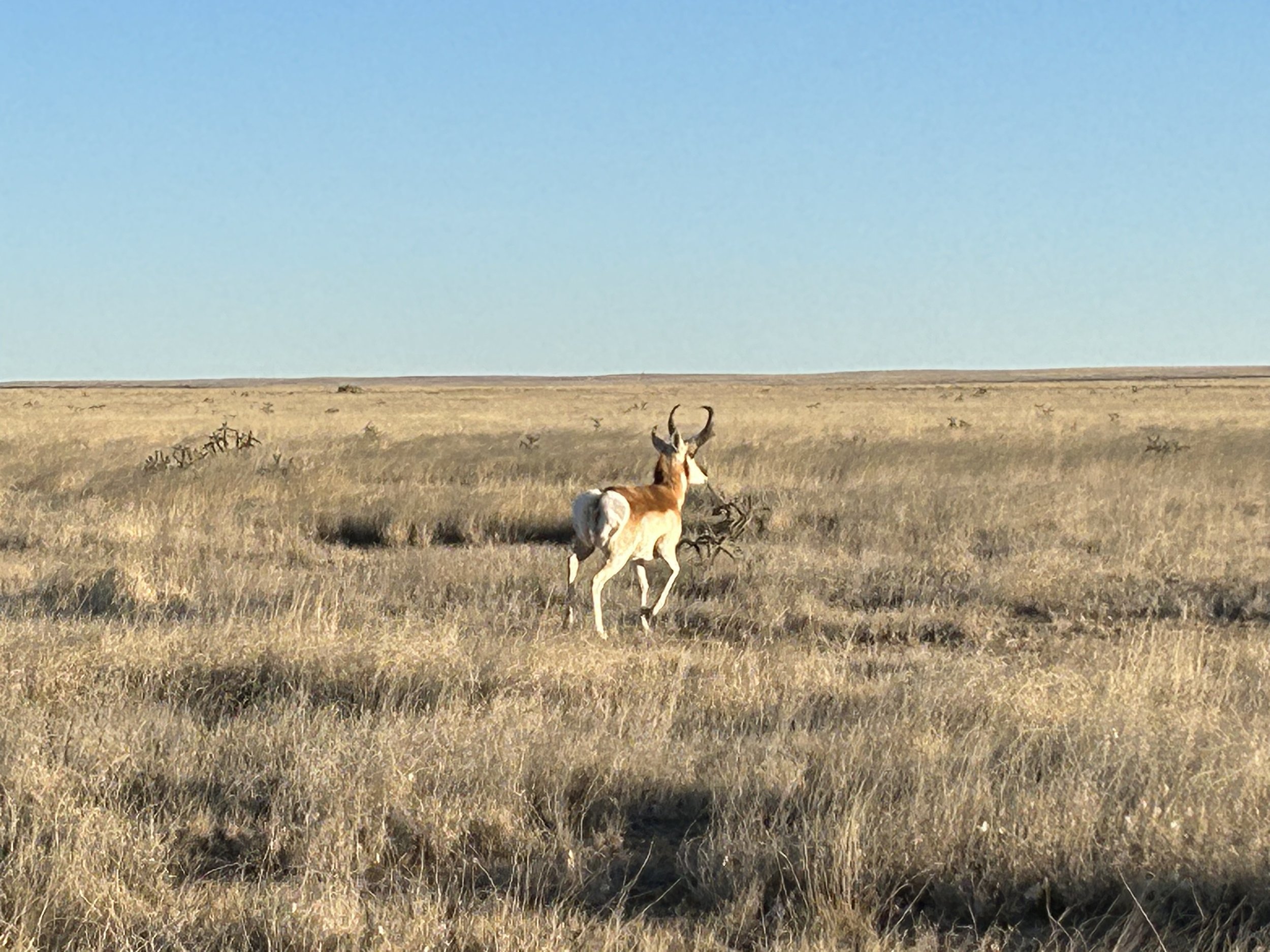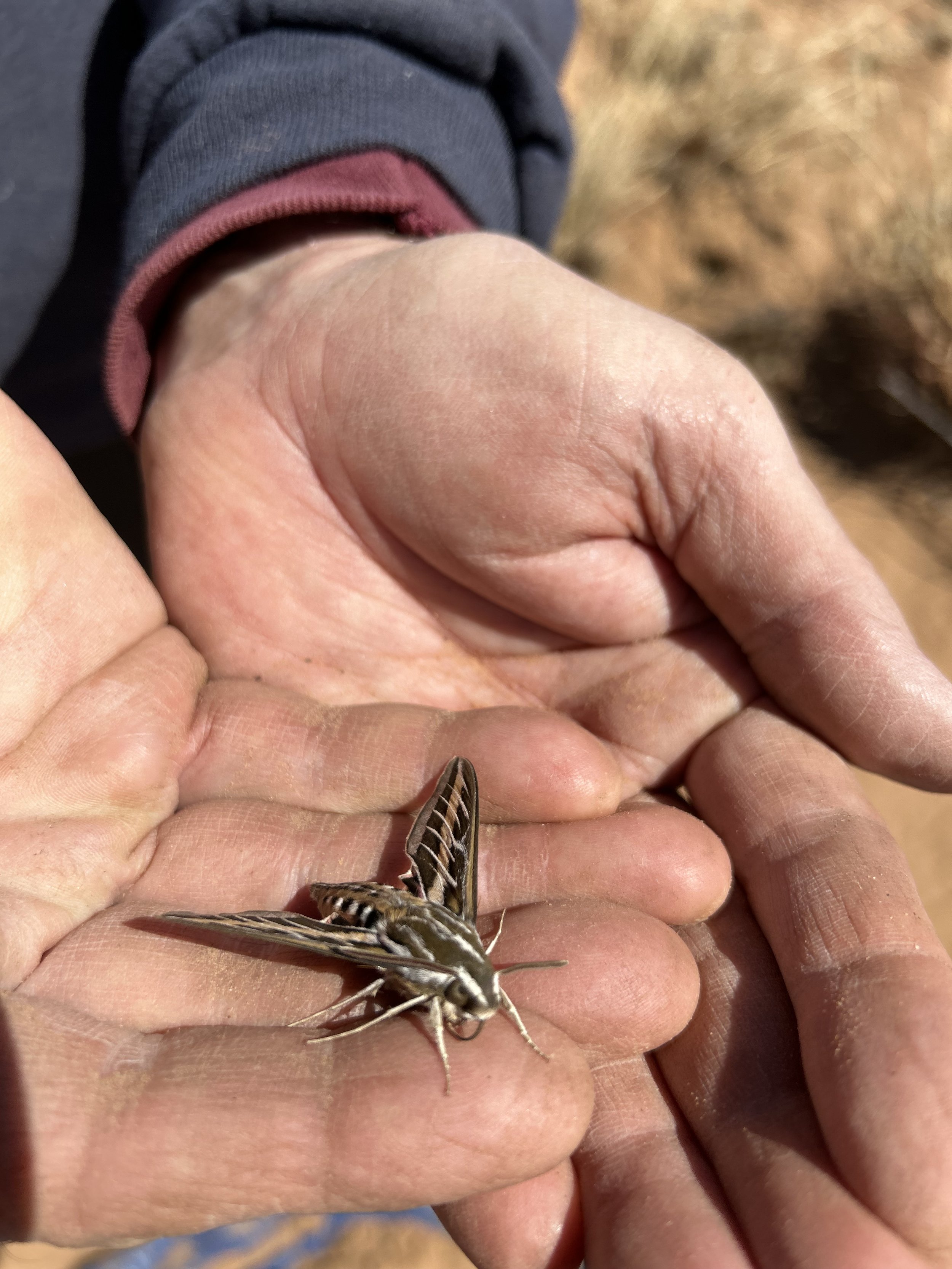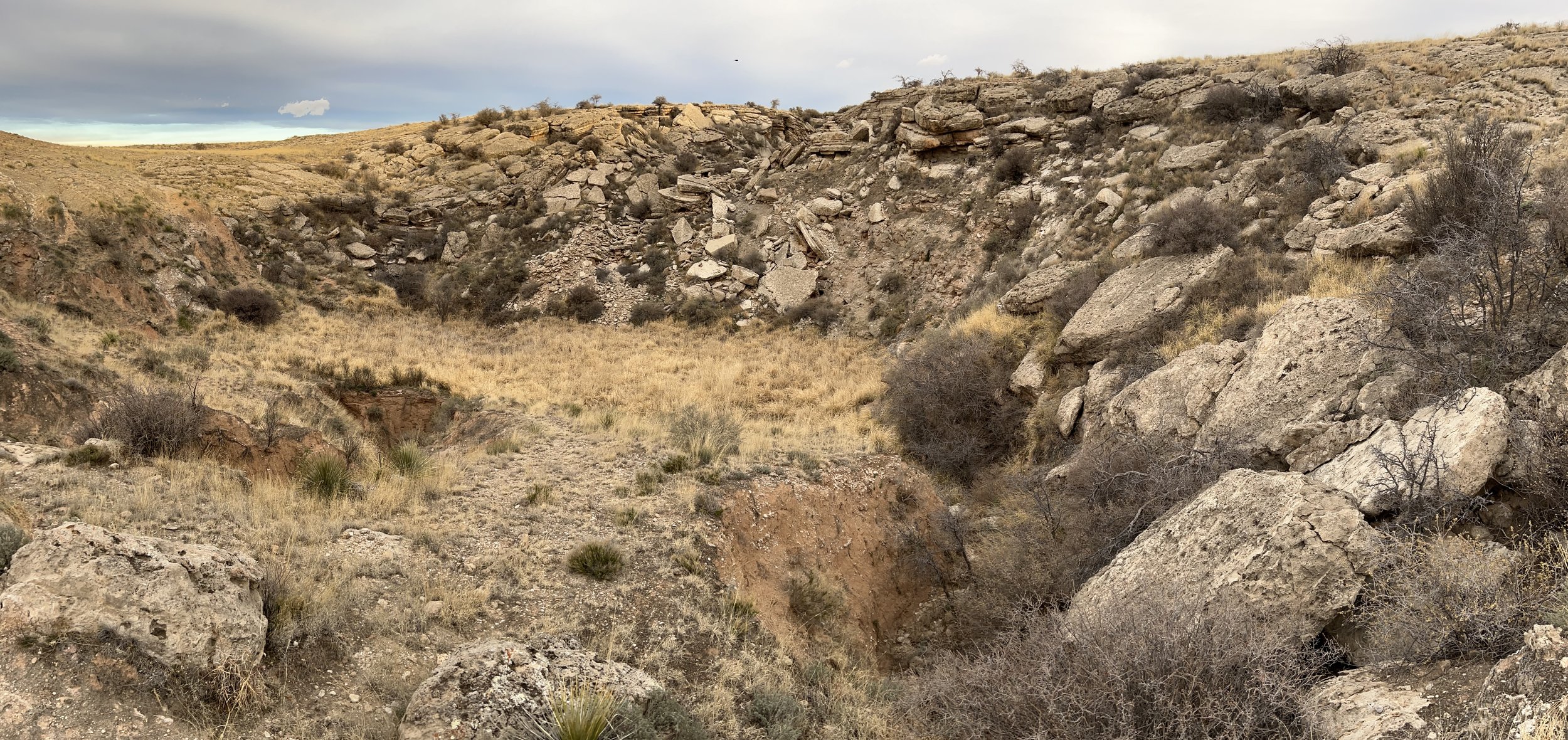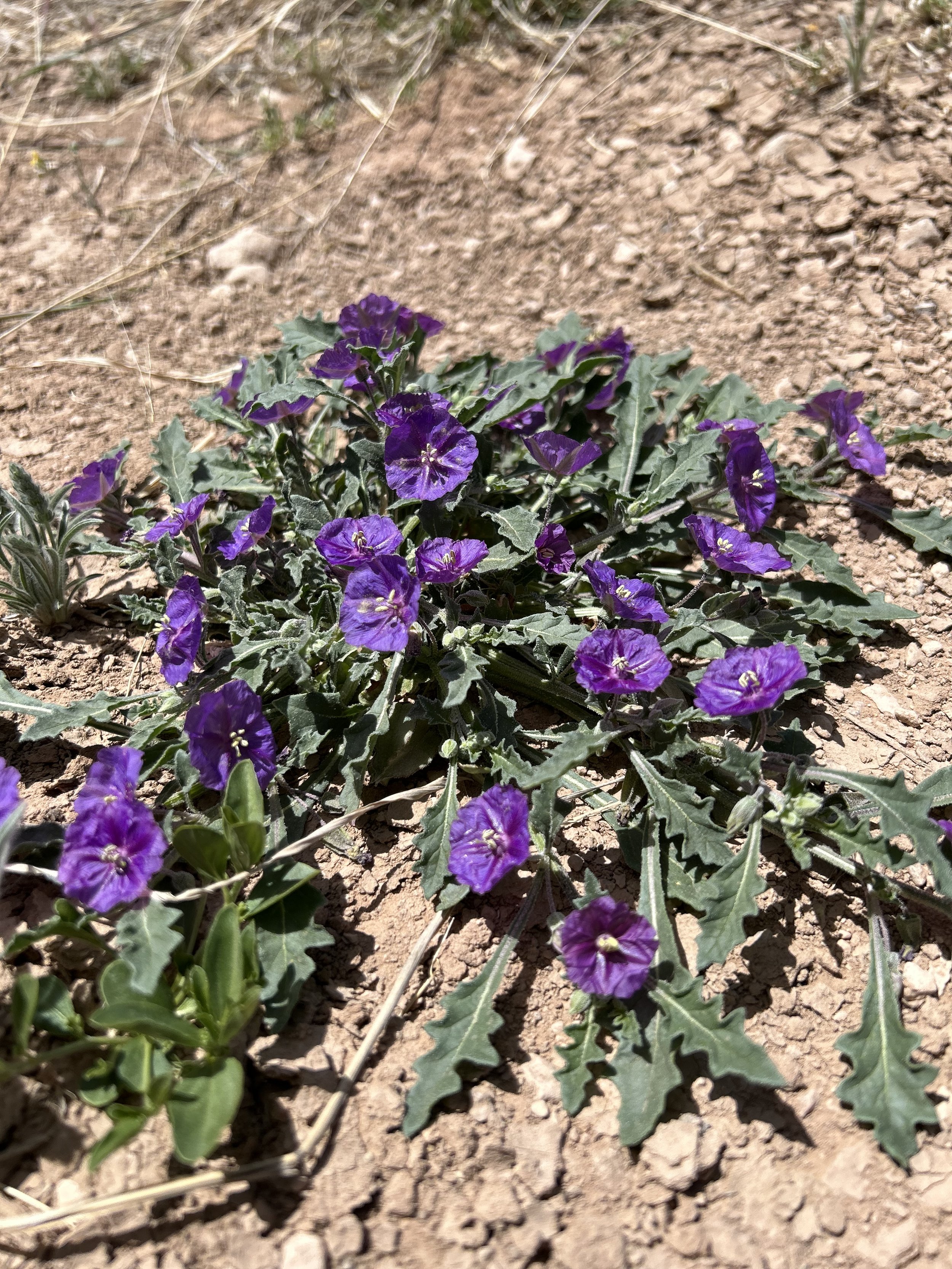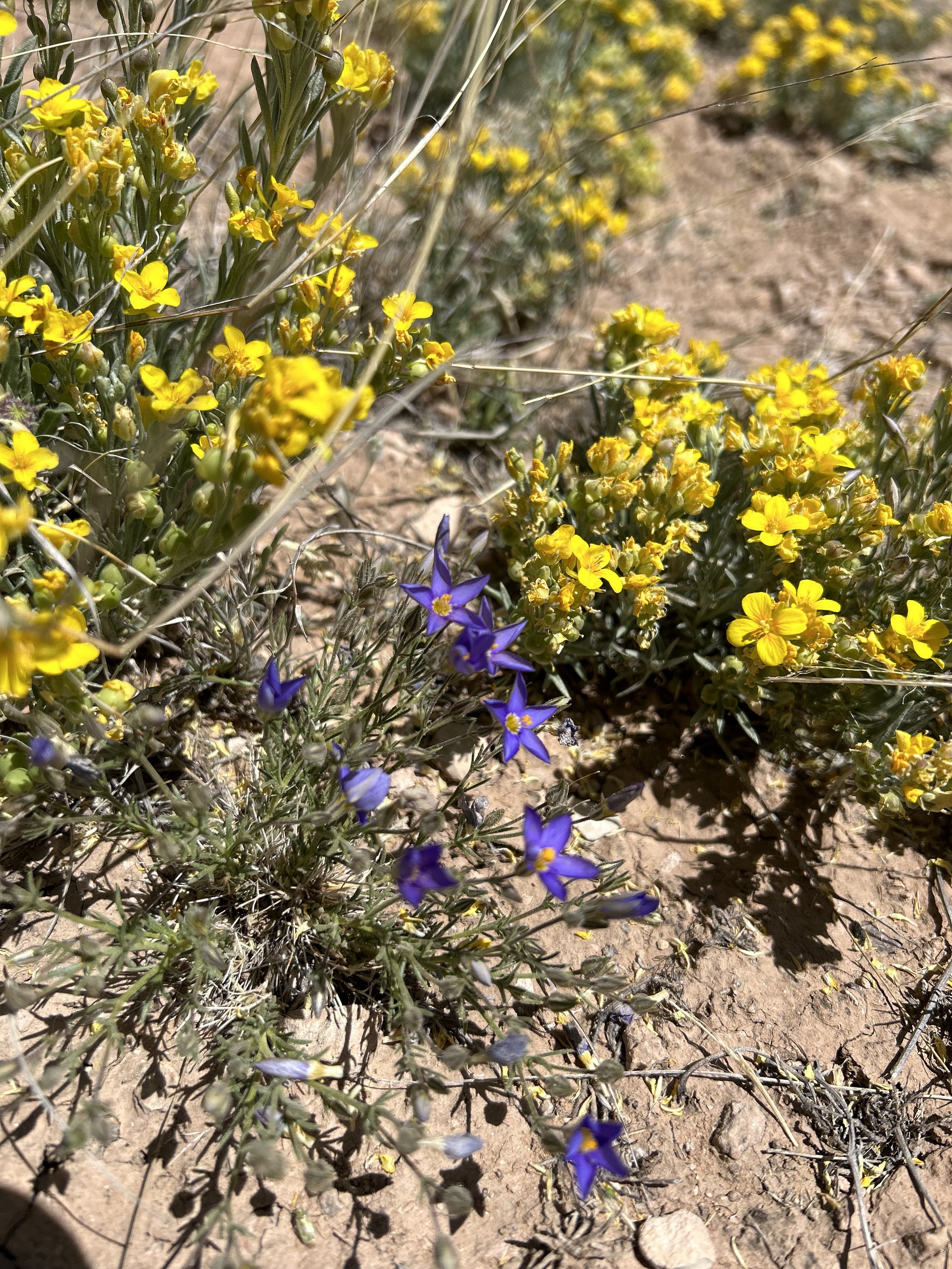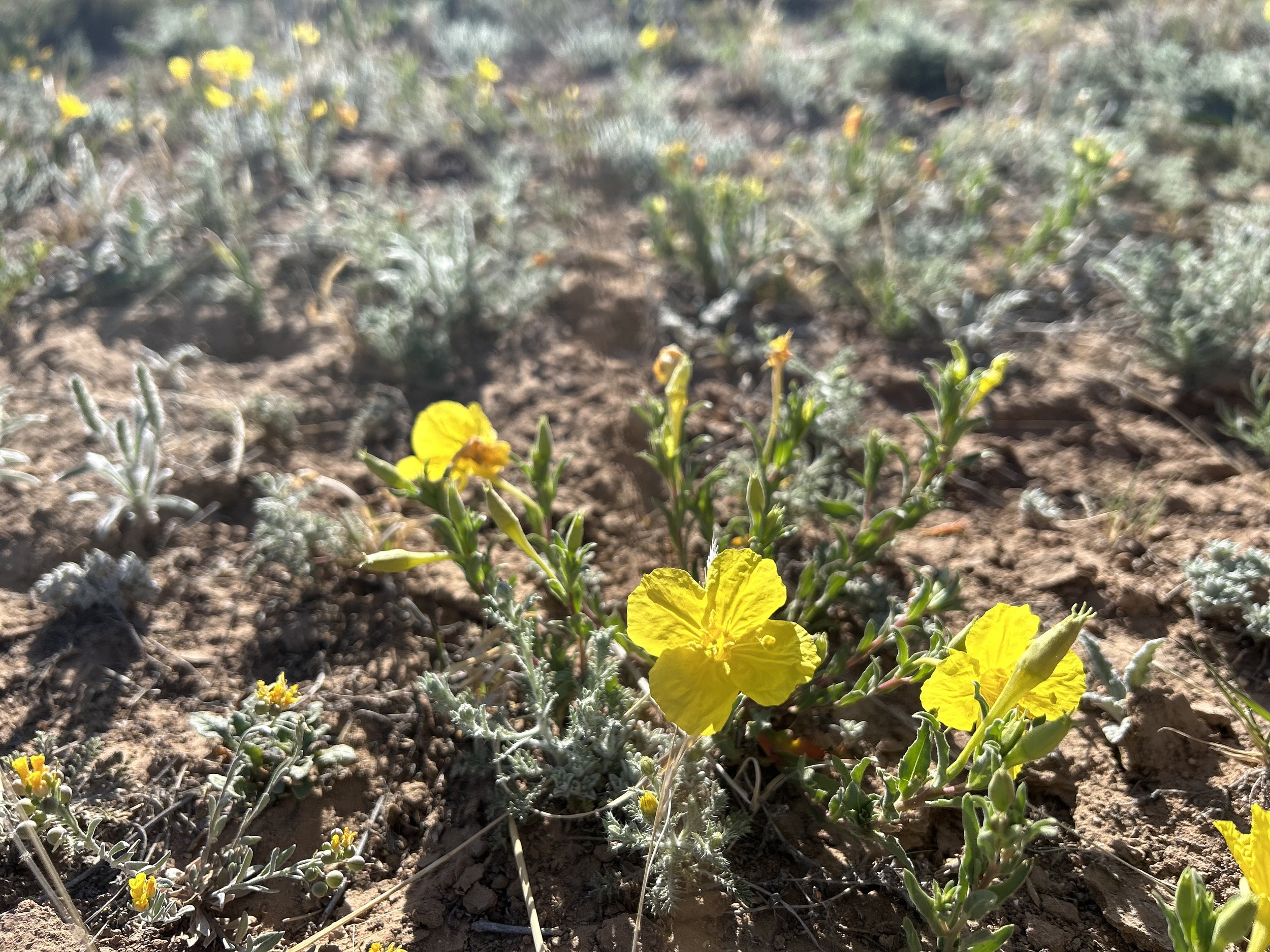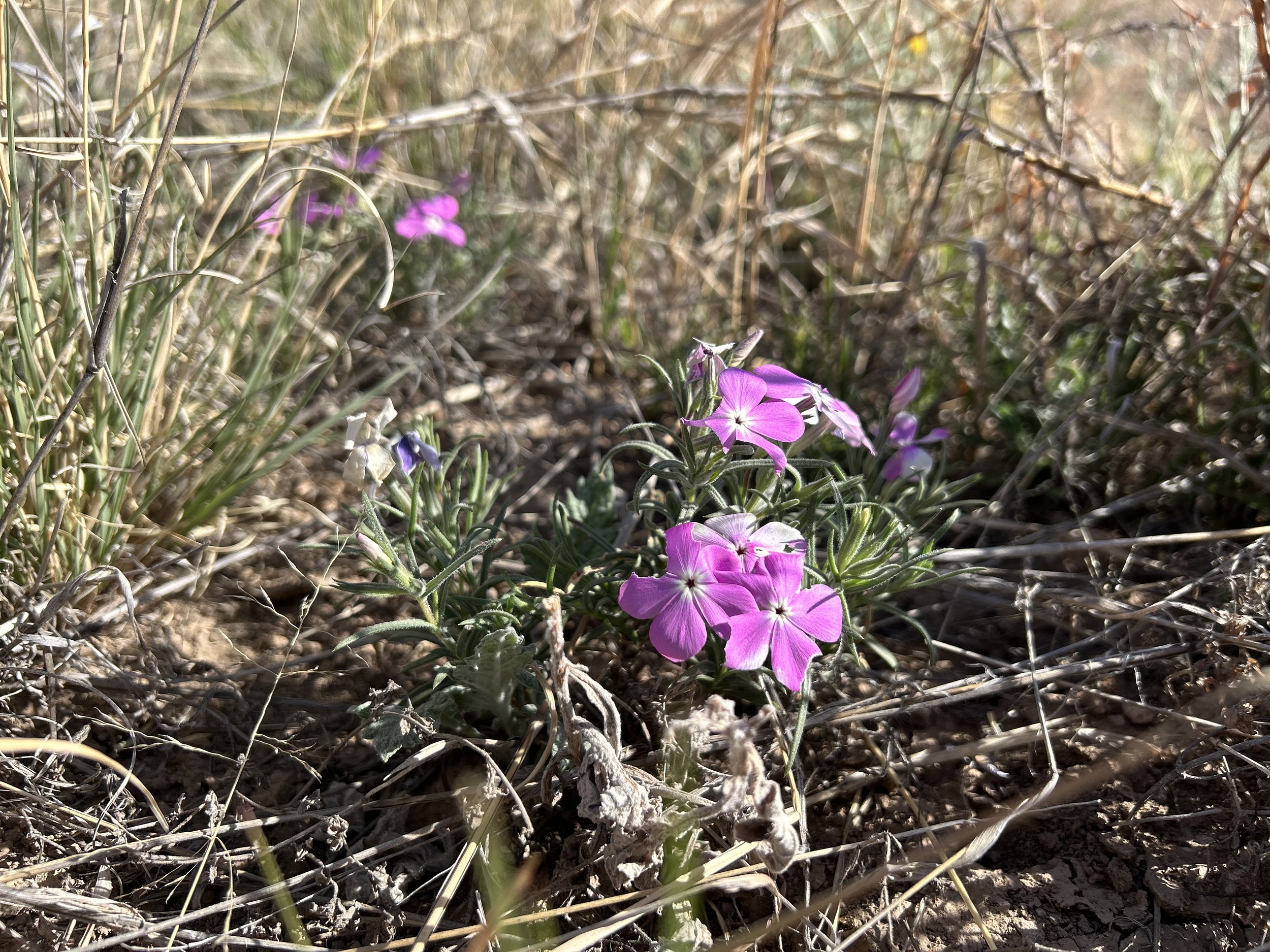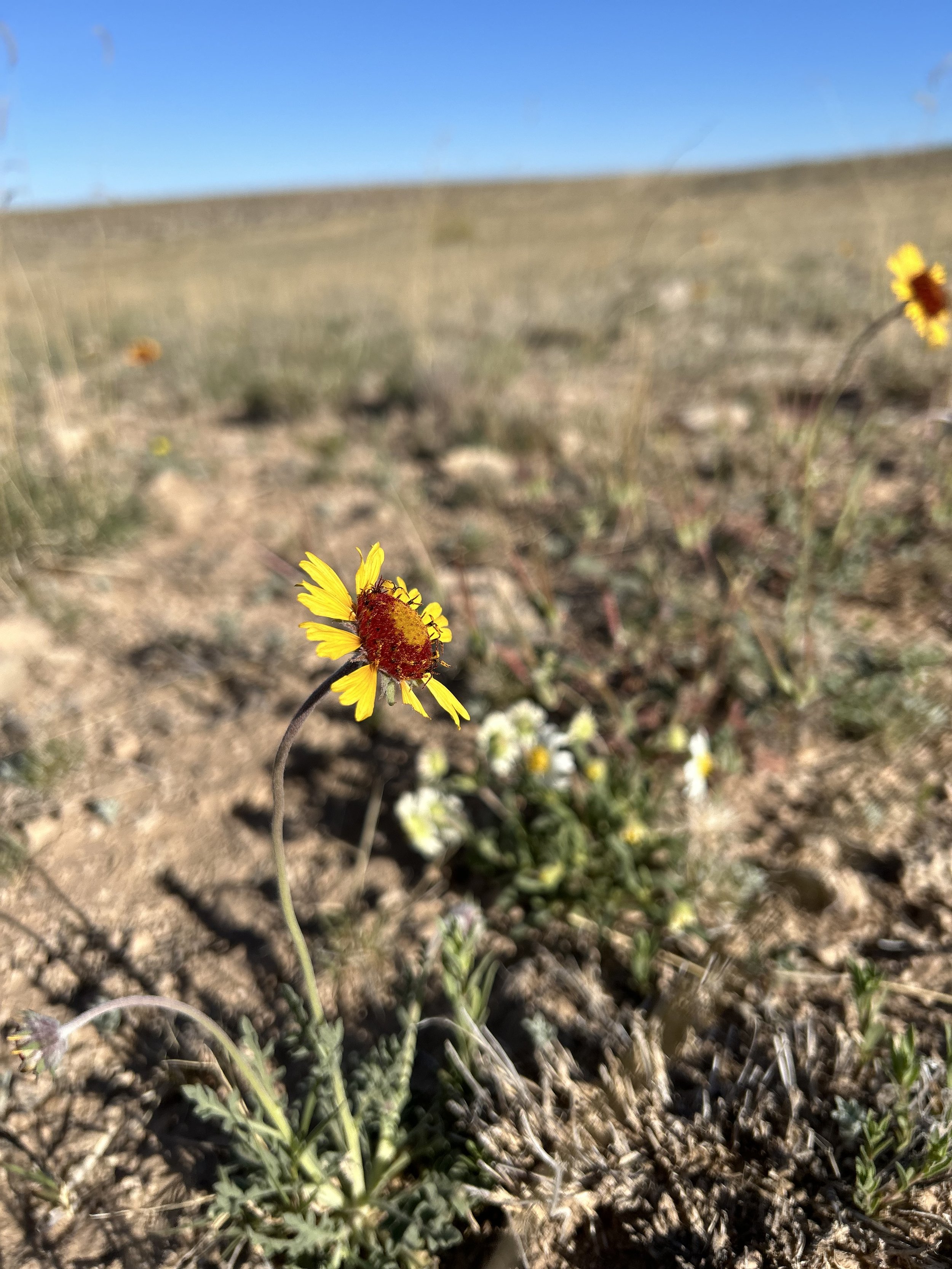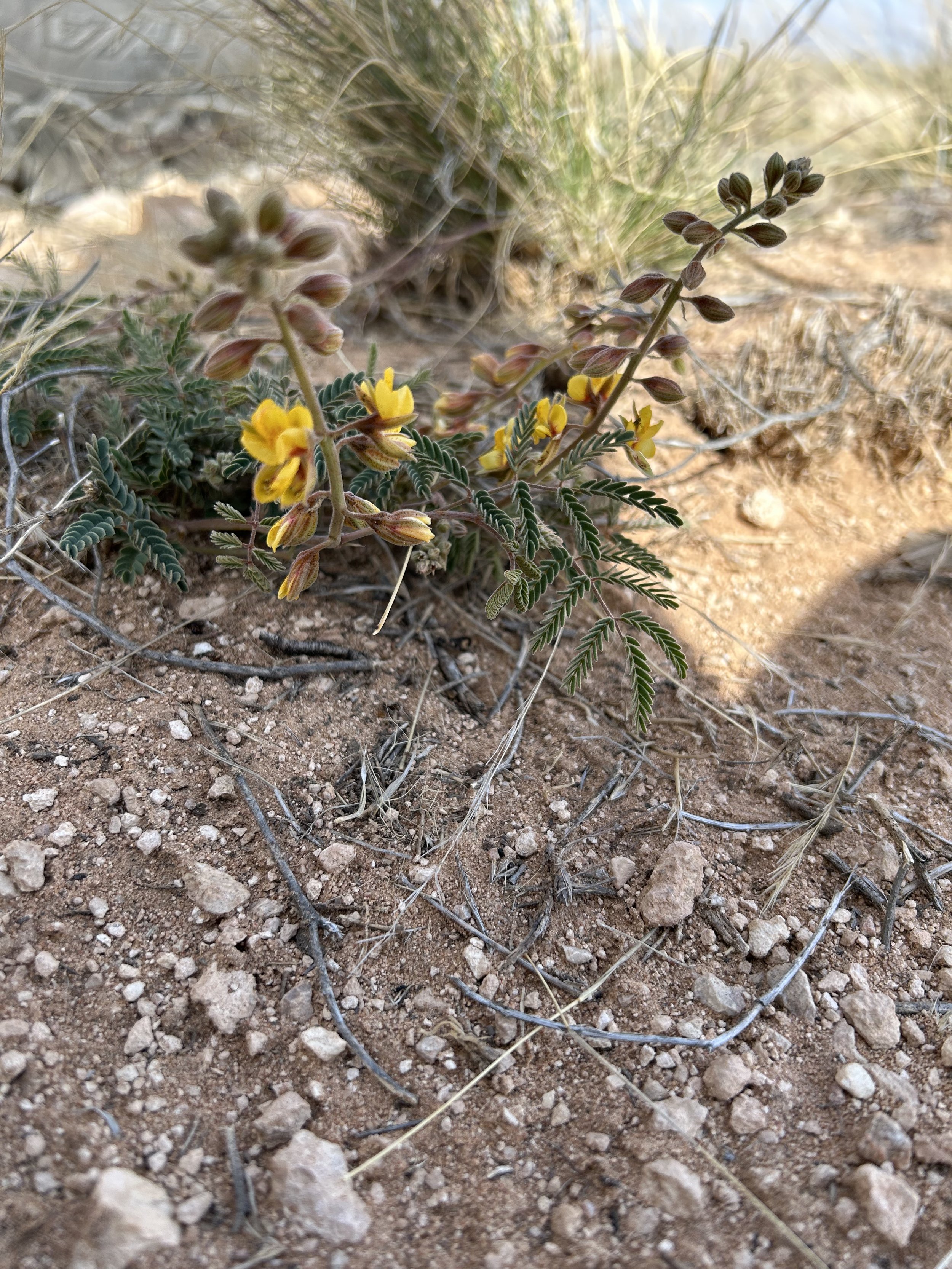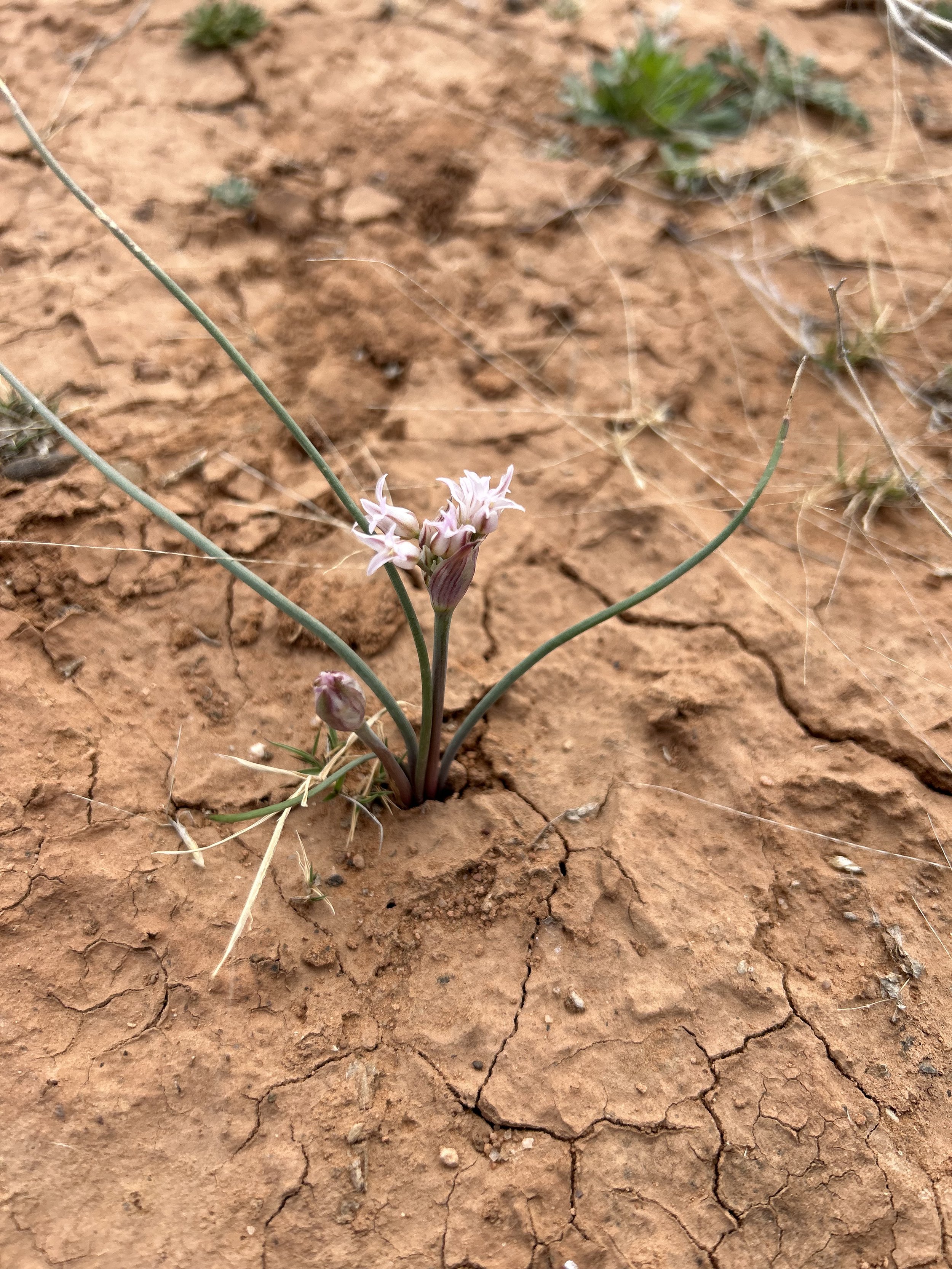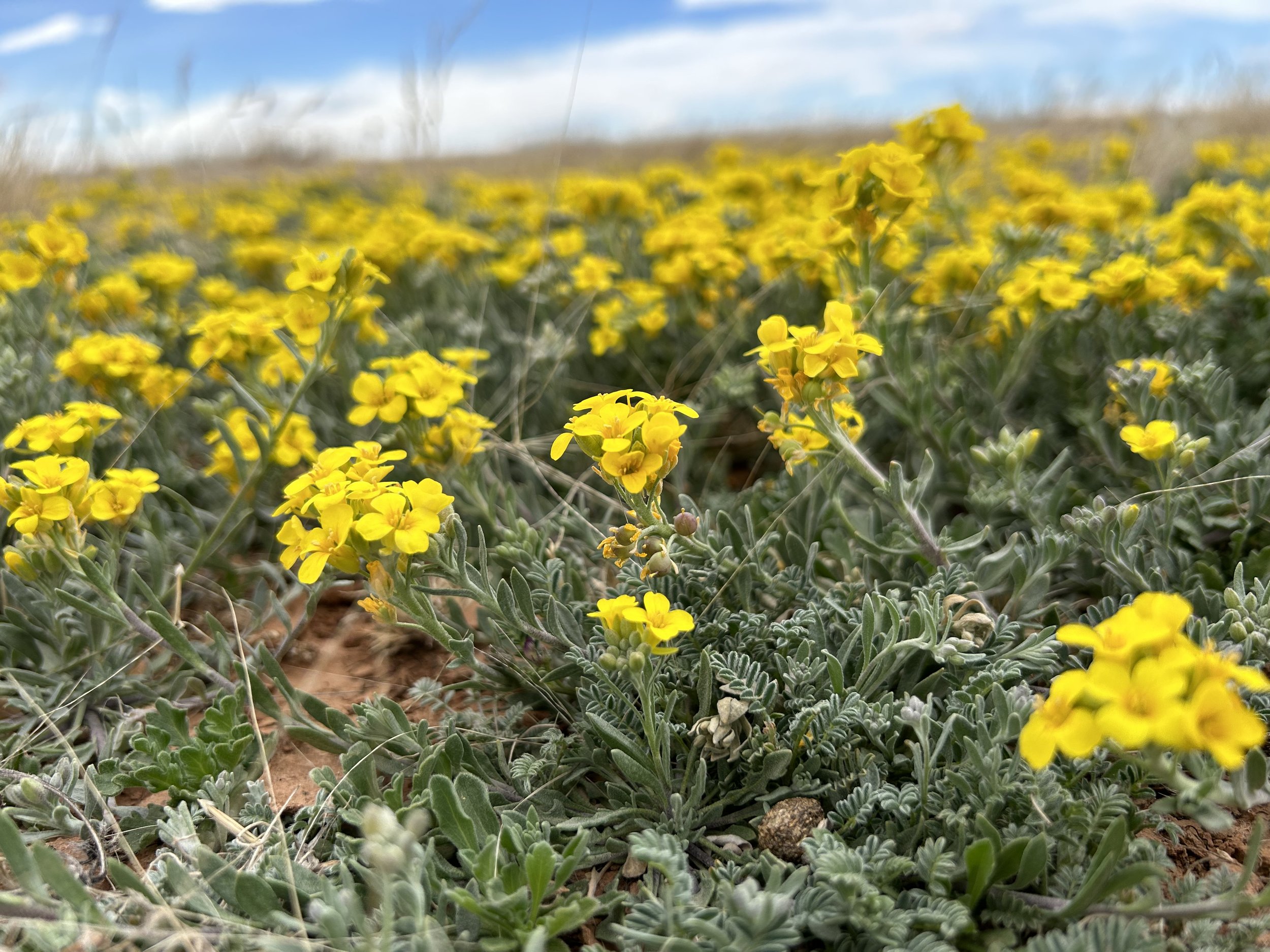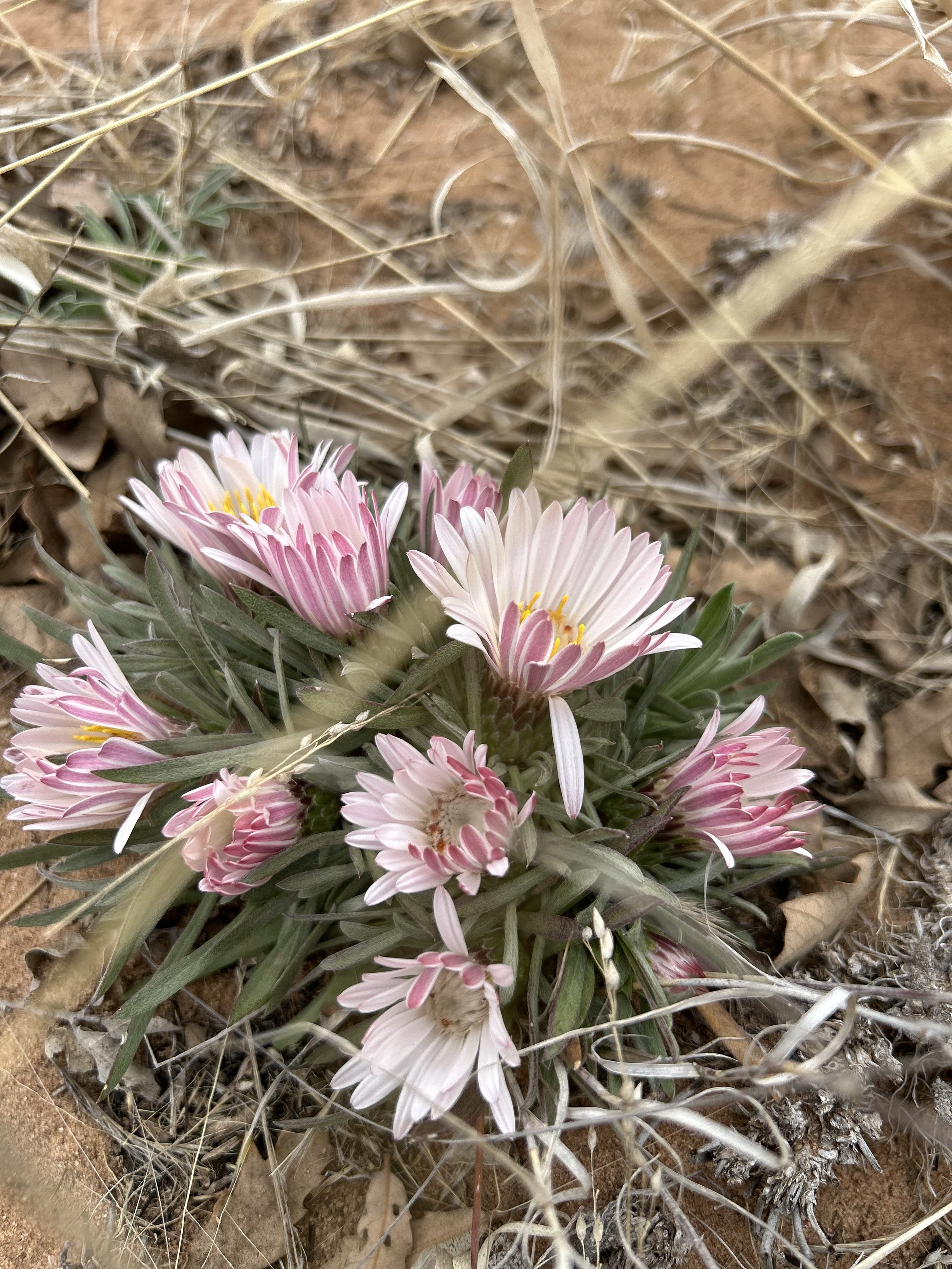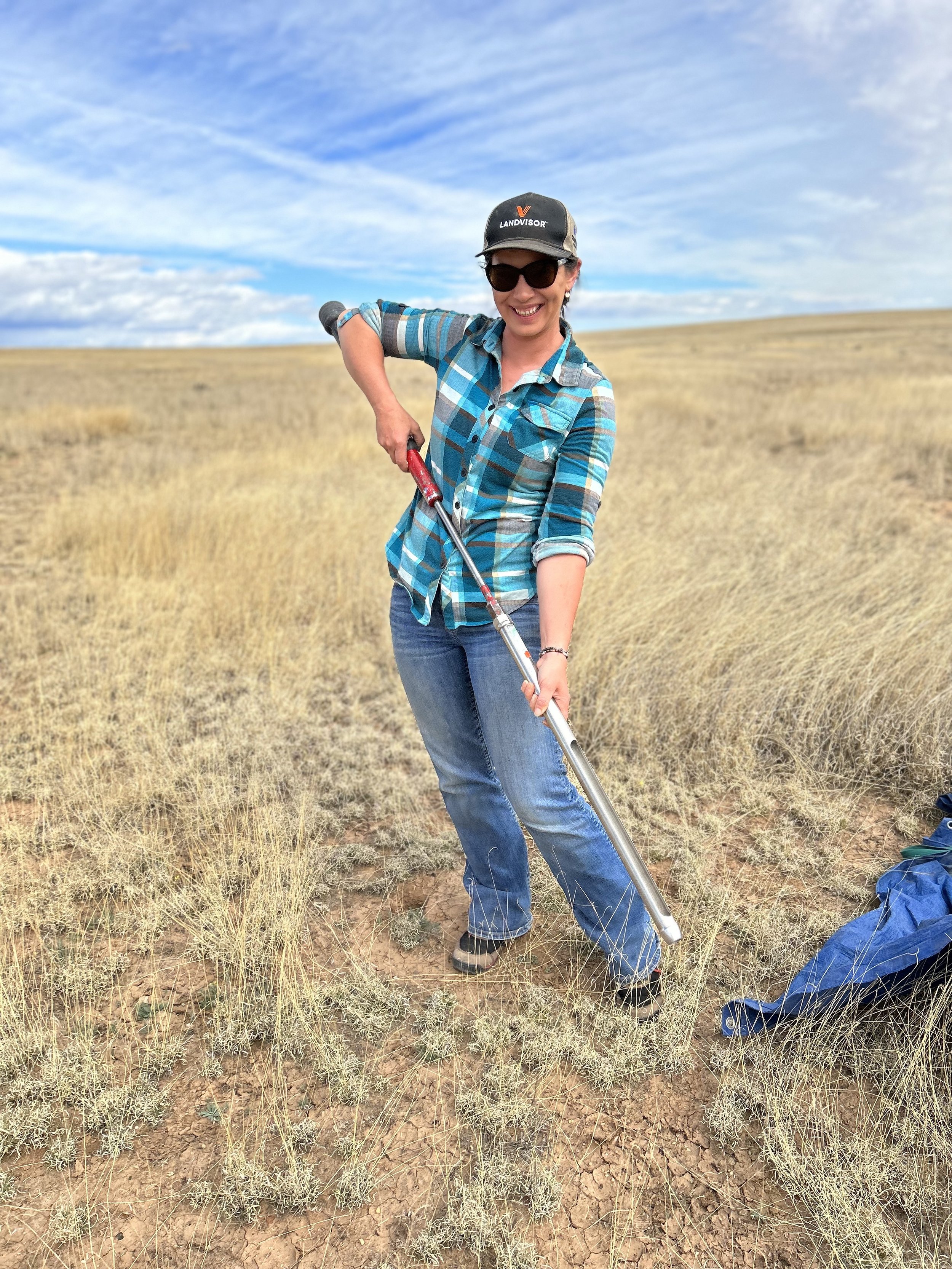The New Mexico Rangeland Enhancement Project
Written by Megan K. Nasto, Research Scientist, Working Lands Conservation
The Sand Country Ranch in Chavez County, New Mexico.
Under the dawning sun in the grasslands and sand dunes of eastern New Mexico, a low booming is heard across the rangeland. Then another low booming. Then another. In a matter of moments, a harmonious set of booms is heard from an unknown number of individuals. Then silence befalls the rangeland. Seconds of silence turn into what feels like minutes. Hours. Then with a keen eye, what appears to be a mottled mess of brown and white, bright orange orbs, and a black spike can be seen fluttering above a sea of grasses before descending back into obscurity. And the booming begins again.
This, of course, is the majestic scene of lekking lesser prairie chickens. The lesser prairie chicken is a small bird within the grouse family, and is considered a key species of the southern plains. It’s easy to understand why. It took us two incredibly early mornings of quiet and deliberate searching to find this lek. I had never seen a prairie chicken up until this point, and I was about to give up hope despite being fortunate enough to work on federally designated prairie chicken areas. But then we heard them. We crept as quietly as we could through decadent grasses and shinnery oak. We sat down on a bare patch of sandy soil with our binoculars at the ready. We waited, and finally our efforts were rewarded. A lek of over 20 prairie chickens could be seen about 30 meters away booming and fluttering in courtship of females. It was a beautiful scene that filled me with awe and wonder. I no longer cared about waking up before the sun rose, and I found myself wishing I knew more about birds. Maybe I should have become an ornithologist? A fleeting thought. I am a soil ecologist for a reason. But I don’t believe I can personally appreciate the soil beneath my feet without appreciating the ecosystem above it. Or vice versa, for that matter. The soil provides the foundation for productive and diverse vegetation, and the vegetation provides the habitat for the prairie chicken. It is all connected and it is all beautiful. It is also all susceptible to degradation. And that brings us here. To this rangeland in eastern New Mexico.
Rangelands are working landscapes providing many ecosystem services to many different stakeholders. And the rangelands in eastern New Mexico are no different. These lands are critical habitat for the lesser prairie chicken as well as other key species like pronghorn and sand dune lizard. They are also a production center of crude oil and livestock. So how does one manage for wildlife habitat without hurting the operations and livelihoods of ranchers? How can ranching be used as a tool to improve wildlife habitat, not hurt it? These are questions that can only be answered by collaborative partnerships of trust and respect. If the time is taken for trust to be built, these partnerships can undoubtedly lead to coordinated management actions that work to improve all ecosystem services of rangelands. In other words, novel solutions to complex management issues where all stakeholders benefit. The thing that is missing, though, is the spark to catalyze such a partnership, and the data to back it all up.
The Gypsum Country Ranch, Chavez County, NM.
In 2021, we partnered with Western Landowners Alliance (WLA) to ignite a collaborative partnership between local ranchers, and state and federal agencies. We are working to generate and share local knowledge of rangeland health, and build local capacity to collect data that informs adaptive land management practices on these rangelands. In the first of what is hopefully a series of long-term projects, we are focusing on soil health and organic carbon. This is because – again – soil health is the basis for rangeland health. Without healthy soils, we don’t have healthy rangelands, and without healthy rangelands, we don’t have quality wildlife habitat. The National Fish and Wildlife Foundation (NFWF) recognized the value of such a collaborative partnership, and such a robust stream of data collection, and awarded WLA a three year grant to fuel this work.
In November of 2022, we gathered the entire partner group for a working meeting in Roswell, NM to share thoughts and ideas, and discuss the initiation of the project. During this visit, our rancher partners took us on a tour of their rangelands and shared their history of grazing. It was an immensely informative trip, and we even managed to dig some soil pits with the help of some stellar NRCS employees from the Las Cruces, Carlsbad, Santa Fe, and Roswell, NM Field Offices, as well as the Marfa, TX Field Office. All of this set us up for success in designing a sampling strategy across the rangelands that not only enables us to answer fundamental questions of how land management affects soil health and organic carbon, but scale-up estimates of soil organic carbon to the entire landscape.
Luis Garcia (NRCS Las Cruces Field Office) teaching Kris the common vegetation on sand dunes of eastern NM.
Logan Peterson (NRCS Santa Fe Field Office) showing project collaborators how he describes soil profiles.
Tatum High School students,Garrett Flowers and Jeremiah Hernandez, working with us to help dig and learn all things soil!
Project partner, Jesse Juen, proud of his soil core.
Come March of 2023, we traveled back to eastern NM to begin a massive soil sampling campaign. With high resolution maps of soil type and texture, vegetation type and density, topography, livestock grazing plans, brush treatments, and prescribed burns in hand, we set out to sample over 200 individual site locations across four ranches comprising approximately 127,000 acres of rangeland. This work was supported by on-the-ground, hand-in-the-soil help from the incomparable Jesse Juen (retired NM BLM Director) and Bre Owens (WLA), as well as two Tatum High School students, the NM State Lands Office, and the NM Department of Game & Fish. In all, we collected nearly 2,000 pounds of soil that is now sitting in the brand new Working Lands Conservation laboratory eagerly awaiting to be processed and analyzed for organic carbon. The work was hard but – oh, man – the work was fun. We dug through sandy and limestone clay soils. We trekked across sand dunes and karst sinkholes. We braved 50 mph winds and intense temperature swings. We 4-wheeled it through endless roads of sand. We blasted everything from Ryan Bingham to Taylor Swift from the truck speakers. We witnessed countless herds of pronghorn and mule deer. We found a desert box turtle shell and pronghorn shed. We saw many song birds, butterflies, and moths. We strolled through seas of grasses and wildflowers. We dodged the thorns of mesquite. We kept a wary yet eager eye out for rattlesnakes. We conversed with many cows. And we spent our evenings laughing around the dinner table.
The amount of work that goes into these projects is something I will never underappreciate. The willingness of ranchers to open themselves up, welcome us into their homes, introduce us to their families, and share their stories is truly a beautiful thing. The number of different state and federal agencies with different land management goals coming to the same table to hear from one another is inspiring. The folks behind the scenes that didn’t flinch when I handed them a GIS file with so many many soil sampling sites that required archeological clearance is invaluable. And the local community that brought us two incredibly hardworking teenagers to dig soil, open livestock gates, teach us what they know about the land, and – frankly – make us feel young again is undeniably special. I will forever feel incredibly grateful for being a part of this project, and I am so excited to put the data directly in the hands of the ranchers and land managers so they can continue working together collaboratively and productively.
Me, local rancher partner, Jesse Juen, Bre Owen (WLA), and Megan Boatright and Camilla Ramirez (NM State Lands Office) thrilled to have the sampling finished on the Sand Country Ranches.
Me, Jesse Juen, Bre Owens (WLC), and Megan Boatright and Camilla Ramirez (NM State Lands Office) trying for a good photo op with a bunch of bulls.


